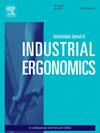基于专利文献分析和梯形模糊层次分析法的护理椅设计决策支持模型
IF 3
2区 工程技术
Q2 ENGINEERING, INDUSTRIAL
International Journal of Industrial Ergonomics
Pub Date : 2025-09-16
DOI:10.1016/j.ergon.2025.103811
引用次数: 0
摘要
产后时期对女性提出了重大的人体工程学挑战。长期和频繁的母乳喂养往往会导致疲劳和肌肉骨骼疾病,影响母婴健康。我们的初步研究表明,78%的母乳喂养母亲在15分钟后就会感到下背部不适,62%的人由于前倾的姿势而感到肩部和颈部紧张。由于缺乏标准化的评估工具和以用户为中心的设计方法,目前的护理椅设计难以满足产后需求。本研究旨在通过开发一种新的决策支持模型,结合专利文献分析(PLA)和梯形模糊层次分析法(AHP),解决产后妇女面临的重大人机工程学挑战。PLA识别护理椅设计的关键创新趋势,模糊层次分析法对评价标准进行排序,形成“技术趋势洞察、定量指标评价”的动态框架。该模型有效地将技术可行性与用户需求结合起来,为优化护理椅设计提供了一个强大的框架,以减少肌肉骨骼疾病(MSDs)并增强母婴健康。PLA通过捕获进化趋势澄清技术边界,而模糊层次分析法量化用户需求的优先级,并使用模糊数解决主观评估中的不确定性。这使得“趋势更新,权重调整,解决方案优化”的连续设计循环成为可能。评价结果显示,“结构合理性”(权重为0.2195)和“安全性”(权重为0.1272)是最重要的。优化后的设计得分为0.6669,显著提高了用户舒适度和产品竞争力。该框架为护理椅优化提供了用户驱动的技术基础路径,旨在减少msd并促进母婴健康。本文章由计算机程序翻译,如有差异,请以英文原文为准。
A decision support model for nursing chair design driven by patent literature analysis and trapezoidal fuzzy AHP
The postpartum period presents significant ergonomic challenges for women. Prolonged and frequent breastfeeding often leads to fatigue and musculoskeletal disorders (MSDs), affecting maternal and infant health. Our preliminary study shows that 78 % of breastfeeding mothers experience lower back discomfort after just 15 min, and 62 % suffer from shoulder and neck tension due to forward-leaning postures. Current nursing chair designs struggle to meet postpartum needs due to the lack of standardized evaluation tools and user-centered design approaches. This study aims to address the significant ergonomic challenges faced by postpartum women by developing a novel decision-support model that integrates Patent Literature Analysis (PLA) and the Trapezoidal Fuzzy Analytic Hierarchy Process (AHP).PLA identifies key innovation trends in nursing chair design, while fuzzy AHP ranks evaluation criteria, forming a dynamic framework of “technology trend insights, quantitative indicator evaluation.” The model effectively aligns technical feasibility with user needs, providing a robust framework for optimizing nursing chair designs to reduce musculoskeletal disorders (MSDs) and enhance maternal-infant health. PLA clarifies technical boundaries by capturing evolution trends, while fuzzy AHP quantifies priority levels of user requirements and addresses uncertainties in subjective evaluations using fuzzy numbers. This enables a continuous design loop of “trend updates, weight adjustments, solution optimization.” Evaluation results highlight “structural rationality” (weight 0.2195) and “safety” (weight 0.1272) as top priorities. The optimized design achieved a score of 0.6669, significantly enhancing user comfort and product competitiveness. This framework offers a user-driven, technically grounded path for nursing chair optimization, aiming to reduce MSDs and promote maternal-infant well-being.
求助全文
通过发布文献求助,成功后即可免费获取论文全文。
去求助
来源期刊
CiteScore
6.40
自引率
12.90%
发文量
110
审稿时长
56 days
期刊介绍:
The journal publishes original contributions that add to our understanding of the role of humans in today systems and the interactions thereof with various system components. The journal typically covers the following areas: industrial and occupational ergonomics, design of systems, tools and equipment, human performance measurement and modeling, human productivity, humans in technologically complex systems, and safety. The focus of the articles includes basic theoretical advances, applications, case studies, new methodologies and procedures; and empirical studies.

 求助内容:
求助内容: 应助结果提醒方式:
应助结果提醒方式:


